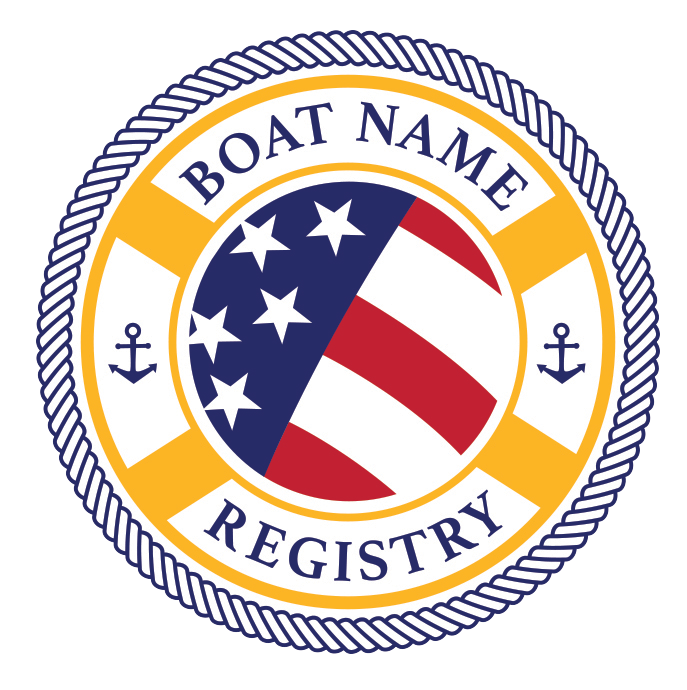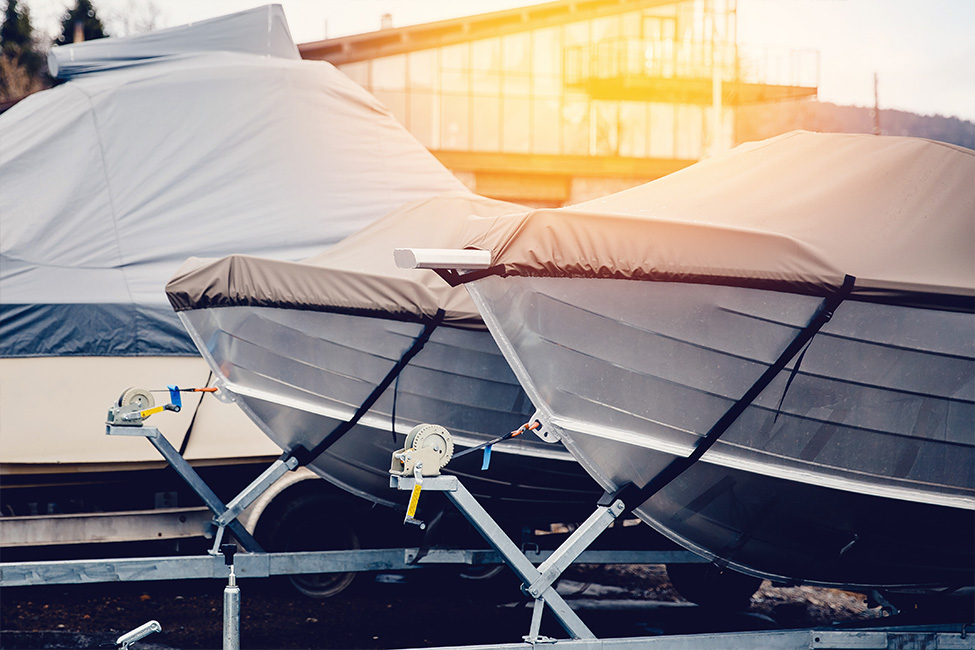Fall’s arrival means winter’s cold, snowy weather won’t be far behind. In areas with chilly (or frigid) winter temperatures, boaters are reluctantly putting their boats to sleep for an extended nap. Before doing that, however, most boatowners are winterizing their vessels from stem to stern.
However, some boaters may try to skate by without performing those often-tedious winterization tasks. Here, we dispel four common boat winterization myths, and offer nine tips on how to efficiently get the job done.
Don’t Believe These 4 Winterization Myths
Myth #1: It doesn’t get that cold here, so I don’t need to winterize my boat’s engine.
In many parts of the country, boats sit idle during the winter months. If the boat’s engine isn’t winterized, moisture accumulates in its components. This causes corrosion (or rust), which can be very destructive. Remember, winterizing your engine costs far less than buying a new one.
Myth #2: I’ll just cycle some regular car antifreeze through the engine.
You’re on the right track, as you should absolutely run antifreeze through your engine block and all related components. However, you must use a marine-grade antifreeze. If you use automotive antifreeze, you can damage your engine components and cooling system. In addition, the car antifreeze can harm the environment if it leaks into the water.
Myth #3: Nothing bad will happen to my fuel if it sits in the tank all winter. I’ll put some stabilizer in the tank when spring comes around.
Unfortunately, the fuel’s components separate when they sit unused for a considerable length of time. Once that happens, you can’t undo the damage. Your only option is to get a technician to professionally drain and clean your fuel system. To avoid this expensive operation, add the fuel stabilizer in the fall.
Myth #4: I’ll just leave a space heater running, and that will keep the engine and boat warm enough this winter.
Leaving a space heater unattended creates a huge fire risk. In addition, the marina could experience a power failure, causing the heater to stop running and put your engine fluids at a high freeze risk.

Schedule Your Required Maintenance Now
Maybe your engine seems a bit sluggish, or you’ve got some plumbing or electrical issues. Or, perhaps you’ve just been lagging on your routine maintenance.
If you wait until spring to address these issues, the yard’s maintenance department will probably be booked solid. They were likely bombarded with calls from impatient boaters who wanted their boats back in the water.
So, get the yard to resolve these problems while there’s less demand. If your budget permits, ask the yard to winterize the boat, too. If that’s not feasible, follow these winterization guidelines that apply to almost any boat. Consult your owner’s manual for winterizing specific equipment or systems.
Follow Your Winterization Game Plan
Winterize the Boat’s Engine
Whether you have an outboard gasoline engine, a stern drive, or an inboard diesel engine, remember to drain all water from the engine components. Then, flush the entire system with antifreeze. Consult your owner’s manual for specific procedures. If you neglect to winterize the engine, there’s a very good chance you’ll have a frozen engine block come spring.
Change the Oil and Oil Filter
Your boat’s engine oil can accumulate water and contaminants over the course of the boating season. In addition, the oil can take on a more acidic composition. If the oil sits idle for months (e.g. the winter), the water and contaminants can damage the engine.
Avoid this unwelcome surprise by changing the engine oil and oil filter this fall. Before changing the oil, let the engine run for several minutes. This enables the contaminants to become suspended in the oil so you can remove them during the oil change. During the process, take time to check for oil leaks.

Stabilize the Fuel and Change the Filter
To maintain your fuel’s integrity, change the fuel filter and/or canister during your winterization sequence. Adding fuel stabilizer is also important. If your engine manual doesn’t recommend a specific brand, choose a stabilizer recommended for that engine type.
Plan to add the fuel stabilizer while you still have several boating trips left. This will give the stabilizer time to make its way around the fuel system. Next, fill the fuel tank until it’s 95 percent full. This allows less space for condensation and thus moisture buildup.
Finally, add more fuel stabilizer and run the engine for a few more minutes. Now, your fuel should be in good shape for the upcoming winter.
Drain and Winterize the Freshwater System
If water remains in any part of your freshwater system during the winter, you’re asking for trouble. Water can freeze in the boat’s valves, hoses, and pumps, potentially resulting in ruptured fittings. If water freezes in a sink drain through hull, there’s a chance it could sink the boat.
Avoid these potential disasters by winterizing your freshwater system. Turn on the freshwater pump, and open all the boat’s faucets. When the water stops flowing, turn off the faucets. The water tank should now be empty. Turn off the freshwater pump.
Pour non-toxic potable antifreeze into the boat’s deck water fill. Turn on the freshwater pump, and open the faucets one at a time. When you see pink antifreeze, turn off that faucet. Repeat the process with every faucet on the boat. Shut off the freshwater pump, and turn off that circuit breaker.
Disinfect and Winterize the Head
Failing to winterize your marine head can result in frozen hoses and other components in the spring. To avoid that nasty outcome, disinfect the head and add antifreeze this fall.
If your boat doesn’t have a holding tank, add disinfectant to the bowl, and pump it throughout the entire system. Next, repeat the process with antifreeze.
If your boat does have a holding tank, empty it before you begin winterizing the head. Next, pump disinfectant and then antifreeze through the tank. If you have a “Y” valve, switch its position and repeat the process. Always consult your owner’s manual for specific directions.
Banish Bilge Water and Oil
During every boating season, boats tend to collect oil and water in the bilge. First, carefully clean up oil spills with oil-absorbent pads and rags. Safely dispose of those items, and thoroughly clean the bilge so residual oil doesn’t get into the water during your final bilge pump-out.
After you’ve done that, pump out any water, and pour in a moisture-displacing lubricant. Then, add a small amount of marine-grade antifreeze so water that collects during the winter won’t freeze and potentially cause damage.
Take Electronics Home if Possible
Moisture is the kiss of death for electronics. Besides causing corrosion, moisture in the cabin can lead to blown fuses and shorts. To prevent these undesirable outcomes, remove all possible electronics and store them in your climate-controlled house for the winter. If you can’t remove a piece of electronic equipment, spray its exposed electrical connections with some type of moisture-displacing lubricant.
Reduce the Interior Moisture Level
If moisture accumulates in your boat’s cabin for several months, expect a good crop of mildew in the spring. To avoid that unwelcome prospect, use several chemical dehumidifiers that extract moisture from the surrounding air.
If you’re sensitive to chemical odors, buy unscented dehumidifiers. Place a unit in several different parts of the boat, and plan to refresh them every few weeks.
While you’re buttoning up your boat for the winter, you’re also looking ahead to the next boating season. So, take this opportunity to be proactive about registering your boat name with Boat Name Registry (BNR).
When you claim your boat name in your home port, no one else will be allowed to register that same name in your location. You’ll also receive several other important benefits. To claim your boat name, click here.
https://www.popularmechanics.com/adventure/outdoors/a184/winterize-boat/ https://www.clemsonmarina.com/blog/winterization-myths-vs-facts https://www.formulaboats.com/blog/how-to-winterize-your-boat/



